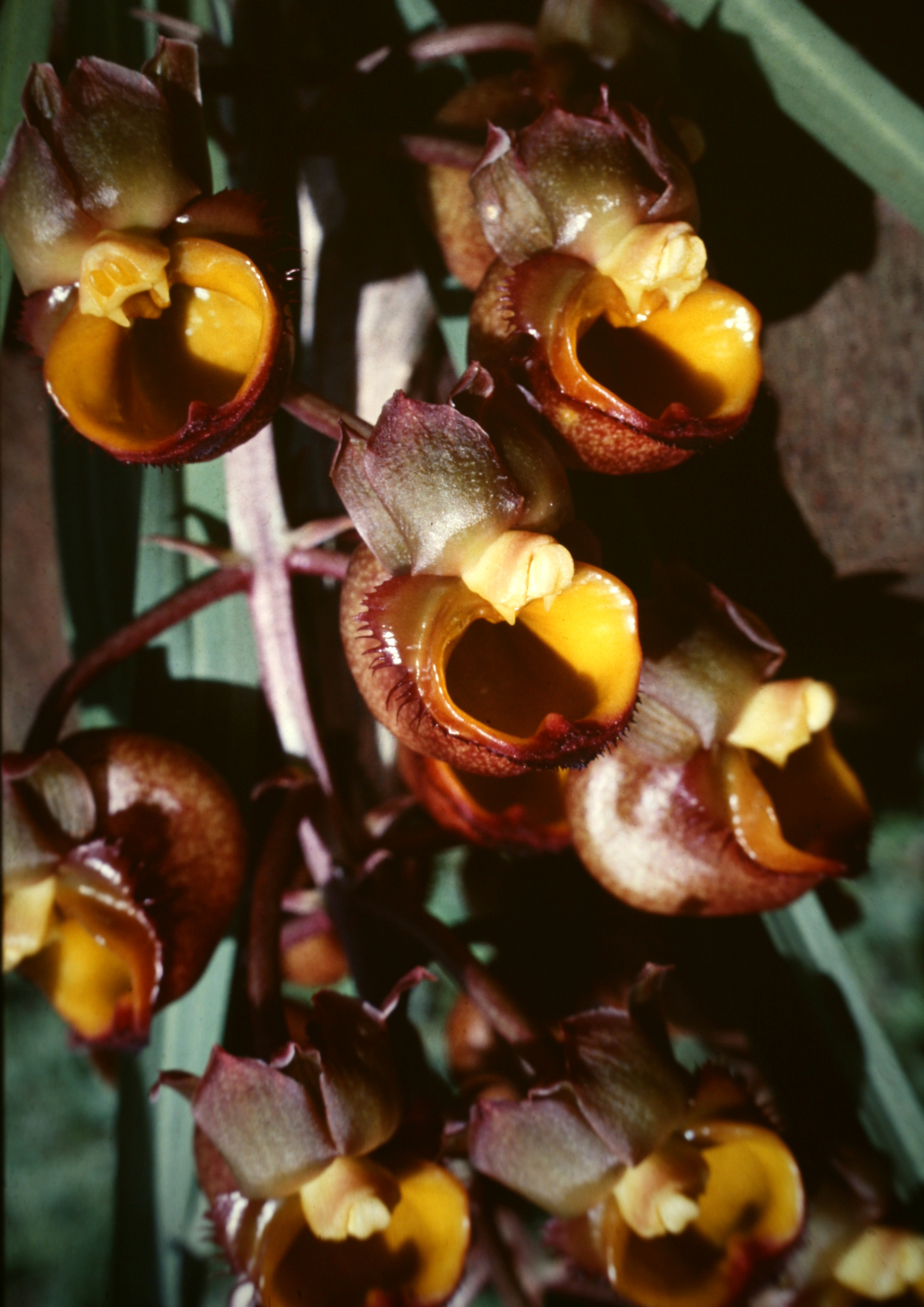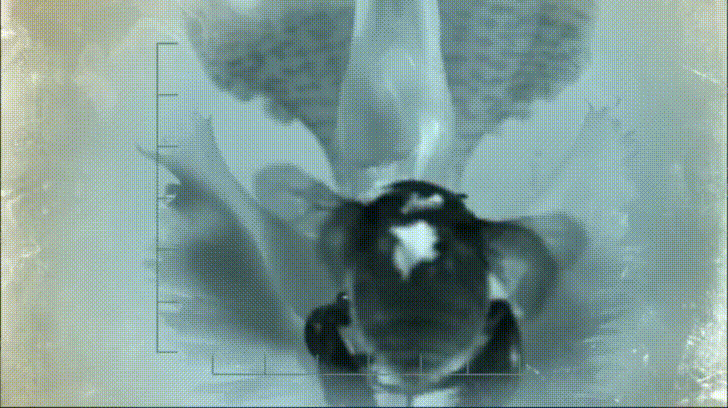Male Catasetum osculatum. Photo by Orchi licensed under CC BY-SA 3.0
Orchids, in general, have perfect flowers in that they contain both male and female organs. However, in a family this large, exceptions to the rules are always around the corner. Take, for instance, orchids in the genus Catasetum. With something like 166 described species, this genus is interesting in that individual plants produce either male or female flowers. What's more, the floral morphology of the individual sexes are so distinctly different from one another that some were originally described as distinct species.
Female Catasetum osculatum. Photo by Valdison Aparecido Gil licensed under CC BY-SA 4.0
In fact, it was Charles Darwin himself that first worked out that plants of the different sexes were indeed the same species. The genus Catasetum enthralled Darwin and he was able to procure many specimens from his friends for study. Resolving the distinct floral morphology wasn't his only contribution to our understanding of these orchids, he also described their unique pollination mechanism. The details of this process are so bizarre that Darwin was actually ridiculed by some scientists of the time. Yet again, Darwin was right.
Catasetum longifolium. Photo by Maarten Sepp licensed under CC BY-SA 4.0
If having individual male and female plants wasn't strange enough for these orchids, the mechanism by which pollination is achieved is quite explosive... literally.
Catasetum orchids are pollinated by large Euglossine bees. Attracted to the male flowers by their alluring scent, the bees land on the lip and begin to probe the flower. Above the lip sits two hair-like structures. When a bee contacts these hairs, a structure containing sacs of pollen called a pollinia is launched downwards towards the bee. A sticky pad at the base ensures that once it hits the bee, it sticks tight.
Male Catasetum flower in action. Taken from BBC's Kingdom of Plants.
Bees soon learn that the male flowers are rather unpleasant places to visit so they set off in search of a meal that doesn't pummel them. This is quite possibly why the flowers of the individual sexes look so different from one another. As the bees visit the female flowers, the pollen sacs on their back slip into a perfect groove and thus pollination is achieved.
The uniqueness of this reproductive strategy has earned the Catasetum orchids a place in the spotlight among botanists and horticulturists alike. It begs the question, how is sex determined in these orchids? Is it genetic or are there certain environmental factors that push the plant in either direction? As it turns out, light availability may be one of the most important cues for sex determination in Catasetum.
Photo by faatura licensed under CC BY-NC-ND 2.0
A paper published back in 1991 found that there were interesting patterns of sex ratios for at least one species of Catasetum. Female plants were found more often in younger forests whereas the ratios approached an even 1:1 in older forests. What the researchers found was that plants are more likely to produce female flowers under open canopies and male flowers under closed canopies. In this instance, younger forests are more open than older, more mature forests, which may explain the patterns they found in the wild. It is possible that, because seed production is such a costly endeavor for plants, individuals with access to more light are better suited for female status.
Catasetum macrocarpum. Photo by maarten sepp licensed under CC BY-SA 2.0
Aside from their odd reproductive habits, the ecology of these plants is also quite fascinating. Found throughout the New World tropics, Catasetum orchids live as epiphytes on the limbs and trunks of trees. Living in the canopy like this can be stressful and these orchids have evolved accordingly. For starters, they are deciduous. Most of the habitats in which they occur experience a dry season. As the rains fade, the plants will drop their leaves, leaving behind a dense cluster of green pseudobulbs. These bulbous structures serve as energy and water stores that will fuel growth as soon as the rains return.
Catasetum silvestre in situ. Photo by Antonio Garces licensed under CC BY-NC-ND 2.0
The canopy can also be low in vital nutrients like nitrogen and phosphorus. As is true for all orchids, Catasetum rely on an intimate partnership with special mychorrizal fungi to supplement these ingredients. Such partnerships are vital for germination and growth. However, the fungi that they partner with feed on dead wood, which is low in nitrogen. This has led to yet another intricate and highly specialized relationship for at least some members of this orchid genus.
Photo by faatura licensed under CC BY-NC-ND 2.0
Mature Catasetum are often found growing right out of arboreal ant nests. Those that aren't will often house entire ant colonies inside their hollowed out pseudobulbs. This will sometimes even happen in a greenhouse setting, much to the chagrin of many orchid growers. The partnership with ants is twofold. In setting up shop within the orchid or around its roots, the ants provide the plant with a vital source of nitrogen in the form of feces and other waste products. At the same time, the ants will viciously attack anything that may threaten their nest. In doing so, they keep many potential herbivores at bay.
To look upon a flowering Catasetum is quite remarkable. They truly are marvels of evolution and living proof that there seems to be no end to what orchids have done in the name of survival. Luckily for most of us, one doesn't have to travel to the jungles and scale a tree just to see one of these orchids up close. Their success in the horticultural trade means that most botanical gardens house at least a species or two. If and when you do encounter a Catasetum, do yourself a favor and take time to admire it in all of its glory. You will be happy that you did.








